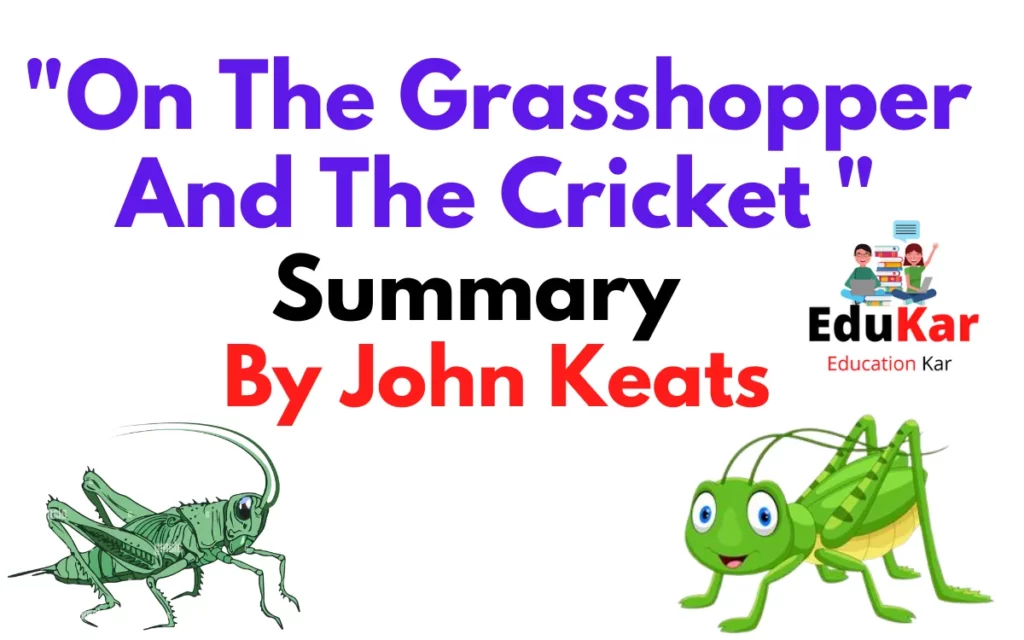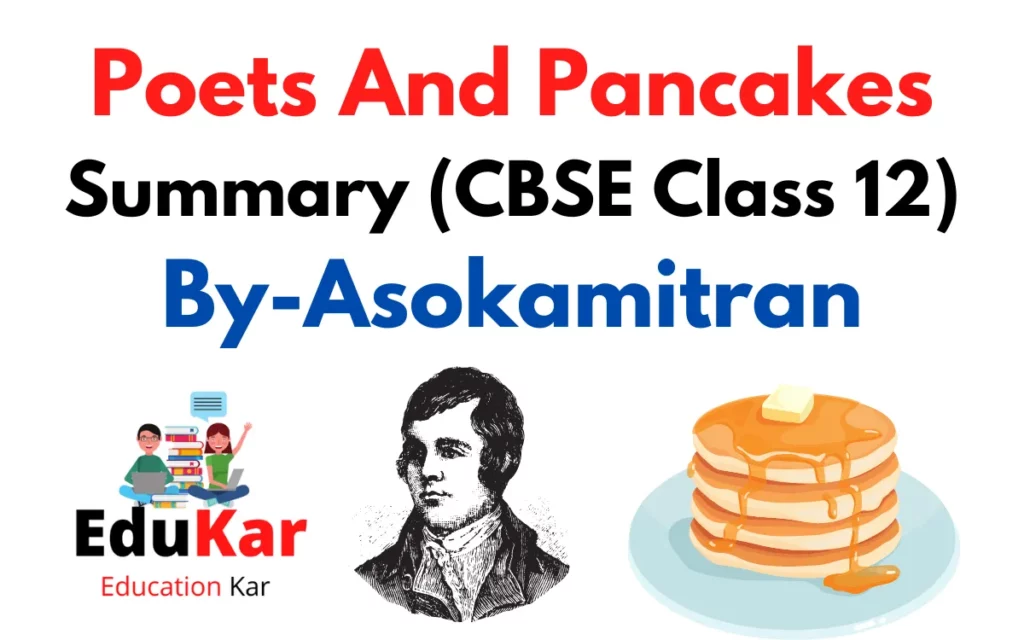Contents
| Name | A Roadside Stand |
| Subject | English |
| Class | 12th |
| Board | CBSE |
| Type | Poem |
| Author | Robert Frost |

Introduction
“A Roadside Stand” by Robert Frost is a poem about a simple, honest, and hardworking farmer who sells his produce at a roadside stand. The poem depicts the farmer’s contentment with his life, his dedication to his work, and his connection to the land. The poem is a tribute to the values of rural life, hard work, and simplicity, and it ends with a reminder of the farmer’s commitment to providing for his family and community.
A Roadside Stand–Short
“A Roadside Stand” is a poem by the famous American poet Robert Frost. The poem was first published in the collection “New Hampshire” in 1923. The poem presents a snapshot of a rural roadside stand, where a farmer sells his produce to passing travelers.
The poem begins with a description of the stand, which is located by the side of a road. The stand is simple, made up of a few boards and a roof, but it is a symbol of the farmer’s hard work and dedication to his trade. The stand is surrounded by fields of crops and trees, and the quiet countryside gives the impression of a peaceful and harmonious existence.
The farmer is described as a “man of few words”, and the poem portrays him as a simple, honest, and hardworking man. He is depicted as someone who is content with his life and takes pride in his work. He is not concerned with wealth or material possessions, but is happy just doing what he loves. The farmer greets each customer with a warm smile, and takes the time to chat and share his knowledge of the land and its produce.
The poem also touches on the theme of the passage of time, as the farmer has been selling his produce at the same spot for many years. He has seen the changing of the seasons, and the comings and goings of travelers. Despite these changes, the stand remains unchanged, a steadfast reminder of the farmer’s perseverance and resilience.
The poem ends with a description of the sun setting, casting long shadows over the fields. The farmer packs up his stand, and heads back to his home, exhausted but content. The poem ends with the lines:
“And he’ll be back tomorrow
with a bag of seed potatoes.”
This final line highlights the farmer’s commitment to his work, and his determination to continue providing for his family and community.
A Roadside Stand–Long
The poem opens with a description of the little old house, which is situated by the road where the traffic speeds by. In front of the house is a new shed that serves as a roadside stand, and it looks pathetically small and out of place next to the bustling traffic. The poem suggests that the stand is in desperate need of money, and the people who run it are hoping that the passing drivers will stop and buy something.
The passing drivers, however, are not interested in stopping. They are too busy with their own lives and concerns to pay attention to the little roadside stand. The poem describes the drivers as having their minds ahead, focused on where they are going and what they need to do next. The drivers are described as being “out of sorts” when they do take a moment to notice the stand, as if they are annoyed by its presence and the interruption it causes to their journey.
The poem describes the signs on the stand, which offer wild berries in wooden quarts, crook-necked golden squash with silver warts, and beauty rest in a beautiful mountain scene. The signs are described as being artless and naive, with the letters N and S turned wrong. The signs are meant to entice the passing drivers to stop and buy something, but they are mostly ignored.
The poem then shifts to a description of the people who run the stand. They are described as being far from the city, living in the countryside, and hoping for some city money to feel in hand. They are hoping that the money they make from the stand will improve their lives and give them the kind of life that is promised in the movies. The poem suggests that the people who run the stand are not living the life that the party in power is said to be keeping from them.
The poem then describes how the news reports suggest that the pitiful kin, the people who live in the countryside and run roadside stands like this one, are to be bought out and mercifully gathered in. The news reports suggest that these people will be moved to villages next to theaters and stores, where they won’t have to think for themselves anymore. The poem suggests that the people who live in the countryside are being treated like children, and that the greedy good-doers are forcing benefits upon them that are meant to soothe them out of their wits.
The poem expresses the sadness and longing of the people who run the stand, and the frustration they feel at being ignored. The people who run the stand are described as waiting all day in almost open prayer for the squeal of brakes, the sound of a stopping car, of all the thousand selfish cars that pass, just one to inquire what a farmer’s prices are. The people who run the stand are described as being desperate for a connection with the passing drivers, and for some recognition of their existence.
The poem suggests that the passing drivers are unable to connect with the people who run the stand because they are too focused on their own lives and concerns. The poem suggests that the passing drivers are unable to see the beauty of the countryside and the value of the people who live there. The poem suggests that the passing drivers are unable to appreciate the simplicity of life in the countryside and the value of the things that the people who live there produce.
About The Author
Robert Frost was an American poet and playwright, widely regarded as one of the greatest poets of the 20th century. Born in San Francisco in 1874, he lived and worked in England and the United States, and is known for his vivid depictions of rural life and the New England countryside. He was awarded four Pulitzer Prizes for poetry, and his works, including “A Roadside Stand”, are still widely read and appreciated today. Frost’s simple, yet powerful writing style, and his ability to capture the essence of rural life, make him a beloved and enduring figure in American literature.
Conclusion
In conclusion, “A Roadside Stand” is a beautifully written and poignant poem that captures the essence of rural life and the values of hard work and simplicity. It highlights the importance of community, and the power of a simple life lived with purpose. The poem is a reminder that the things that truly matter in life are often the simplest, and that a life dedicated to hard work and love of the land can bring happiness and fulfillment.
FAQs:
What is “A Roadside Stand” about?
“A Roadside Stand” is a poem by Robert Frost that explores the idea of making a life for oneself, through hard work and determination. The poem describes a roadside stand selling produce and the experiences of the people who run it.
What is the main theme of “A Roadside Stand”?
The main theme of “A Roadside Stand” is the importance of taking a break from the fast pace of modern life to enjoy the simple pleasures of nature. The speaker reflects on how running a roadside stand has brought peace and joy to his life.
What is the significance of the fruit stand in “A Roadside Stand”?
The fruit stand in “A Roadside Stand” represents a simple and peaceful way of life, where the speaker can escape the fast pace of modern life and enjoy the beauty of nature. The fruit stand also represents the joy and contentment that can be found in simple pleasures.











![Grandma Climbs A Tree Summary [Class 10] By Ruskin Bond Grandma Climbs A Tree Summary](https://edukar.in/wp-content/uploads/2022/09/Grandma-Climbs-A-Tree-Summary-1024x597.webp)




